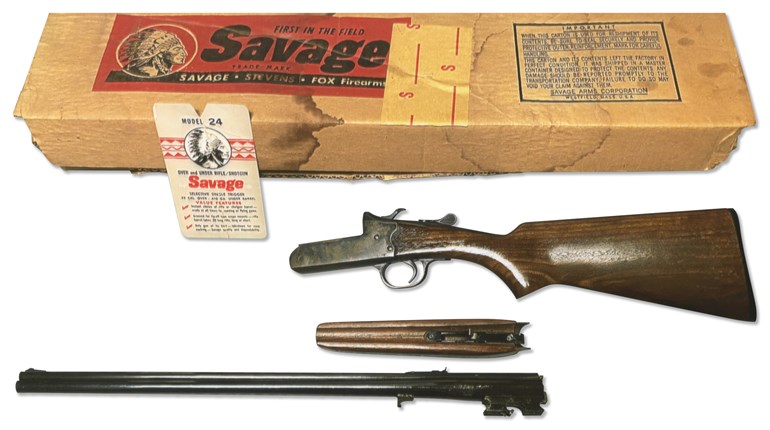
When Ruger introduced its Precision Rifle (RPR) in 2015, it created a whole new category and launched a renewed interest in long-range shooting. Before that time, a precision rifle in a chassis-type receiver was either a custom build or was on the high end of the price list of any gunmaker. Even entry-level chassis rifles would set you back at least $2,500. Street price on the RPR, when it launched, was less than a grand and the rifle could hang with the big dogs. Shooters took notice; and so did the competition.

I could be wrong, but I am pretty sure Savage was the next big-name rifle maker to jump on the chassis-rifle bandwagon. The company introduced its Model 10 BA Stealth in 2016. It was light, well balanced, smooth and easy to shoot. If I have a complaint, it’s that the accuracy fell a bit short. After testing it extensively with a wide range of factory ammo and handloads, this rifle struggles to reach MOA accuracy. While MOA is fine in a modern hunting rifle, it’s really less than “acceptable” in a precision rifle these days.
As Savage has long had a reputation for good accuracy from “affordable” rifles, maybe I had a run of bad luck, but I was testing a lot of Savage rifles during the next few years and was witnessing a trend. With the arrival of each new test rifle, I watched the accuracy continue to decline.

Fast forward to 2020, and the launch of the Axis II Precision, one of the first rifles manufactured under the company’s new ownership. Things have changed—for the better.
Shooting Illustrated’s protocol for formal accuracy testing is five, five-shot groups with at least three different types and weights of ammunition at 100 yards. The average for all 15 groups in the Savage Axis II Precision is .76 inch. The ammo that shot best measured an average of .64 inch. There are several half-inch groups with all the ammo tested. A quick check of my database shows this is the most accurate production chassis rifle I have ever tested. Trust me; there was some stiff competition.
Now, consider that as the price of even an entry-level precision rifle has crept upward of $1,500 or more, the Savage Axis II Precision has an MSRP of $949. A quick check of the internet found the “street price” is about $750, give or take. Considering the level of accuracy and performance, this may well be the best buy in factory-produced precision rifles today.
Is it perfect? Of course not. If you want perfection, spend six or seven thousand on a custom rifle. Even with that, you will probably get your butt handed to you on the range by a guy who bought a new Savage and spent the rest of his money on a modest optic and lots of ammo for practice.
The original Savage Axis rifle was the manufacturer’s entry into the budget-priced, hunting-rifle market that was so hot a few years ago. It uses a round receiver, made in right hand and long action only. The simplicity of the design makes it easier to manufacture and cuts the cost of production. The ejection port is much smaller than what’s found on the company’s flagship Model 110 action. In theory, this adds stiffness to the action and enhances accuracy. Also, the AccuTrigger on the Axis II is mounted on a center pivot and contains a built-in safety.

The Axis II maintains the bones of the Model 110. It uses a floating bolt head that helps keep the lugs in alignment with the receiver. The lugs are lapped to the receiver as part of the new factory blueprinting process. I checked, and the right lug showed 100-percent contact while the left lug had more than 90 percent. For the record, that is excellent. The barrel is threaded to the receiver and locked in place with a jam-nut. This allows control over headspacing and is said to be a big part of the rifle’s ability to be so accurate. My sample rifle has a very tight chamber and the bolt will not close on a Manson GO headspacing gauge. That means the headspacing is set a bit too short. But, I did not encounter any issues chambering any factory-loaded ammo, and I suspect this tight chamber is a factor in the rifle’s outstanding accuracy. Replacement of the barrel is easy with any aftermarket small-shank Savage barrel, but why would you want to do that when the factory model is so accurate? Although the rifle ships without a brake, its 5⁄8x24-threaded muzzle will take any standard brake for the 6.5 Creedmoor.
The plain, non-fluted barrel is 22 inches long and made from carbon steel. It’s button-rifled with a 1:8-inch twist rate. It’s a moderately heavy barrel that measures .745 inch at the muzzle. The finish for the barrel, action and bolt handle is matte-black oxide. The bolt body is uncoated steel with a black Savage logo.
The Axis II rifle does not use a captured recoil lug like the Model 110 and its many offspring. Instead, there is a recoil lug em-bedded into the chassis that projects up 1⁄8 inch. The action has a corresponding slot cut on the bottom into which this recoil lug to inserts, which serves to help shift recoil forces to the chassis without stressing the action screws. While as a traditionalist I don’t like this increasingly popular recoil-lug design, all the rifles I have tested that use it have been outstanding performers.
Bolted to the action with two captured screws, the exclusive Modular Driven Technologies (MDT) chassis makes the Axis II Precision a versatile platform. The screws take a rather small 5⁄32 Allen-style wrench. Savage recommends torquing to 65 inch-pounds. With this small wrench size, I cringe when I do that, but so far, no problems have popped up. Still, had the design engineer asked me, I would have suggested a larger wrench size.
The chassis body is anodized aluminum with olive-drab, injection-molded skin, and the comb is adjustable with two setscrews. I would prefer the comb to be a bit longer and project forward another inch or 2, but I can say the same of most chassis rifles I have used.
Length-of-pull (LOP) is adjustable by adding or removing the supplied spacers. This works very well for any owner/operator situation, but if you frequently adjust the LOP, it can be a bit of a process. The angled rubber grip is also from MDT and has a palm swell on both sides to accommodate both right- and left-handed shooters.
 The trigger is a Savage AccuTrigger on a pivot pin. It’s held in place by a rubber O-ring embedded in the chassis. When the action is tightened into place, this O-ring puts pressure on the trigger and ensures it stays in the correct location. The safety is located on the tang.
The trigger is a Savage AccuTrigger on a pivot pin. It’s held in place by a rubber O-ring embedded in the chassis. When the action is tightened into place, this O-ring puts pressure on the trigger and ensures it stays in the correct location. The safety is located on the tang.
On this rifle, the trigger broke at 4 pounds, 5 ounces. I left it there through all the accuracy testing because I wanted to see how the rifle performed as it comes out of the box. I later adjusted the trigger to the full lower limit, and the pull weight is now 3 pounds 3 ounces. That’s acceptable, but still a bit stiff for serious long-range shooting.
The Axis II Precision takes AICS magazines. My rifle came with a Savage-branded, polymer, eight-shot magazine, but I am told future rifles will ship with a 10-round magazine. The magazine caused feeding issues, often requiring the bolt to be stopped and backed up slightly to allow the cartridge to move into the correct alignment. I tried three more Savage-brand magazines, and they all had the same feeding problems. I also tried the rifle with Magpul and AI aftermarket magazines, and it fed fine with both.

I also experienced a few failures to eject. The cartridge would flip around and stay in the action. I believe this is from the extractor being a very tight fit in the bolt. Some brands of ammo were worse than others, but it happened with every type of ammo I tried. I suspect it’s just a break-in issue that will self-correct after some more use. The rifle does not seem to have any biases, and shot quite well with any ammo I fed it. The action runs extremely smooth with the right magazine—better than I expected given the price.

Overall, this is an outstanding precision rifle for what may well be the lowest street price in the category. The Axis II Precision Rifle is a great choice for a newbie looking to get into long-range shooting or even for a grizzled veteran just looking to add to his rifle collection.




































